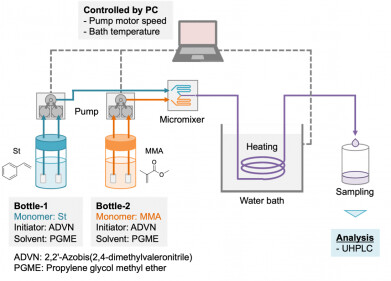Research News
Study shows promise for early detection of melanoma
Oct 07 2024
A new method with potential to detect melanoma in its earlier, treatable stages and which was presented at the European Academy of Dermatology and Venereology (EADV) Congress 2024, (September) uses tumour-specific profiling to detect antibodies unique to stage I and II melanoma patients. Melanoma, a skin cancer with a high mutation rate, produces immunogenic markers that trigger an immune response, resulting in the production of antibodies against cancer-testis antigens (CTAgs). These CTAgs lead to the production of specific antibodies that can act as early diagnostic and prognostic markers for melanoma.
In this study, a cancer array was used to analyse and compare blood samples from 199 patients with stage I and II melanoma and 38 healthy donors recruited through Lifeblood. The samples, collected at initial diagnosis and within 30 days of curative-intent surgery, contained specific IgG antibodies against three tumours with area under the curve (AUC) values ranging from 0.857 to 0.981 in the discovery cohort and from 0.824 to 0.985 in the internal validation cohort.
Of the three identified markers, one showed an AUC value of 0.9805 in the discovery cohort, with 98% sensitivity and 76% specificity; and 0.9846 in the validation cohort, with 99% sensitivity and 82% specificity.
“These results indicate that 99% of melanoma patients in the validation cohort were positive for this marker, while 82% of healthy individuals were correctly identified as negative using the recommended threshold,” explained Dr Cristina Vico-Alonso, lead researcher from the Victorian Melanoma Service, Melbourne, Australia. “While 18% of healthy individuals were incorrectly identified as positive for this marker, combining it with the other two markers into a multiparameter signature does, however, help improve accuracy.”
Based on the validation data, only 1% of melanoma patients would have a negative test for this top marker, suggesting that a negative result is highly indicative of the absence of melanoma.
“It is important to note, though, that this cohort included healthy individuals with no prior or current cancers and excluded individuals at high risk of developing melanoma,” added Dr Vico-Alonso. “Further testing in a real-world cohort is necessary to determine if these findings hold true when confounding factors, such as comorbidities, are considered."
"We are currently using the cancer array to identify candidates for a pan-cancer diagnostic test, initially focusing on melanoma, lung, bowel and pancreatic cancers. In previous research, we identified a unique signature of antigens in advanced melanoma patients associated with more aggressive disease or metastases. Recently, we also identified another distinct antigen signature that differentiates between stage III melanoma patients who experienced recurrence and those who did not."
Dr Vico-Alonso concludes, “This method of early detection could be integrated into current melanoma screening practices to provide additional information, especially in uncertain cases, potentially avoiding unnecessary procedures.”
More information online
Digital Edition
Lab Asia 31.6 Dec 2024
December 2024
Chromatography Articles - Sustainable chromatography: Embracing software for greener methods Mass Spectrometry & Spectroscopy Articles - Solving industry challenges for phosphorus containi...
View all digital editions
Events
Jan 22 2025 Tokyo, Japan
Jan 22 2025 Birmingham, UK
Jan 25 2025 San Diego, CA, USA
Jan 27 2025 Dubai, UAE
Jan 29 2025 Tokyo, Japan




.jpg)














